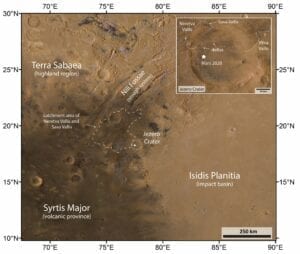
Luxembourg, 18 February 2021. – Everybody will be watching it: NASA’s Perseverance rover will land on Mars tonight. The touchdown on the Red Planet is scheduled for approximately 3:55 p.m. EST today, the U.S. agency says.
In New York City, the Empire State Building is illuminated in red to celebrate the landing.
Perseverance will be the agency’s ninth mission to land on the Red Planet and its fifth rover there. The rover carries a suite of new scientific instruments to build on the discoveries of NASA’s Curiosity rover, which has found that parts of Mars could have supported microbial life billions of years ago, NASA says.
Along with characterizing the planet’s geology and climate, and paving the way for human exploration beyond the Moon, the rover is focused on astrobiology or the study of life throughout the universe. Perseverance is tasked with searching for telltale signs that microbial life may have lived on Mars billions of years ago. It will collect rock core samples in metal tubes which future missions would return to Earth for deeper study, NASA says.
Scientists believe that Jezero Crater, Perseverance’s landing site, could be home to evidence of former life on the Red Planet. Jezero was the site of a large lake, 3.5 billion years ago, with its own river delta. Scientists believe that while the water may be long gone, somewhere within the 45-kilometre-wide crater, or perhaps along its 610-meter-tall rim, they might find biosignatures – evidence that life once existed there.
 SpaceWatch.Global An independent perspective on space
SpaceWatch.Global An independent perspective on space




